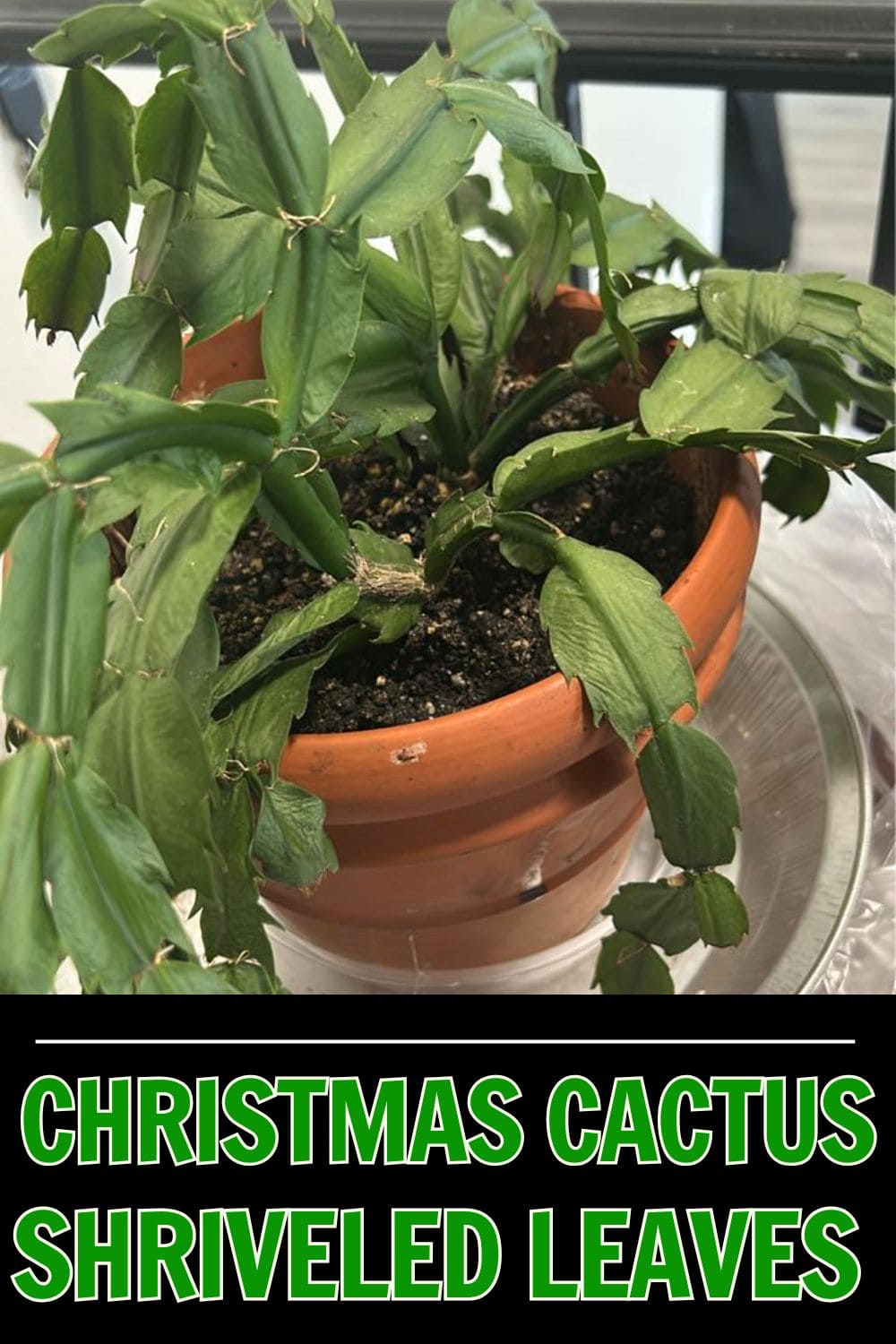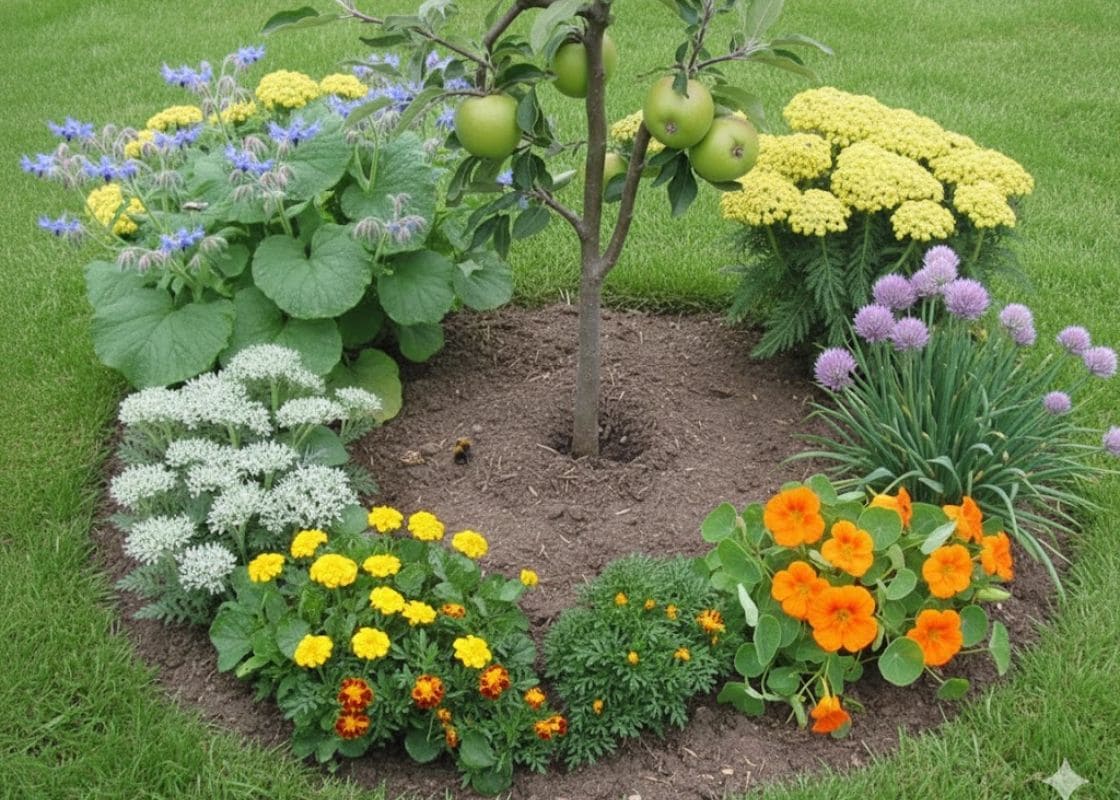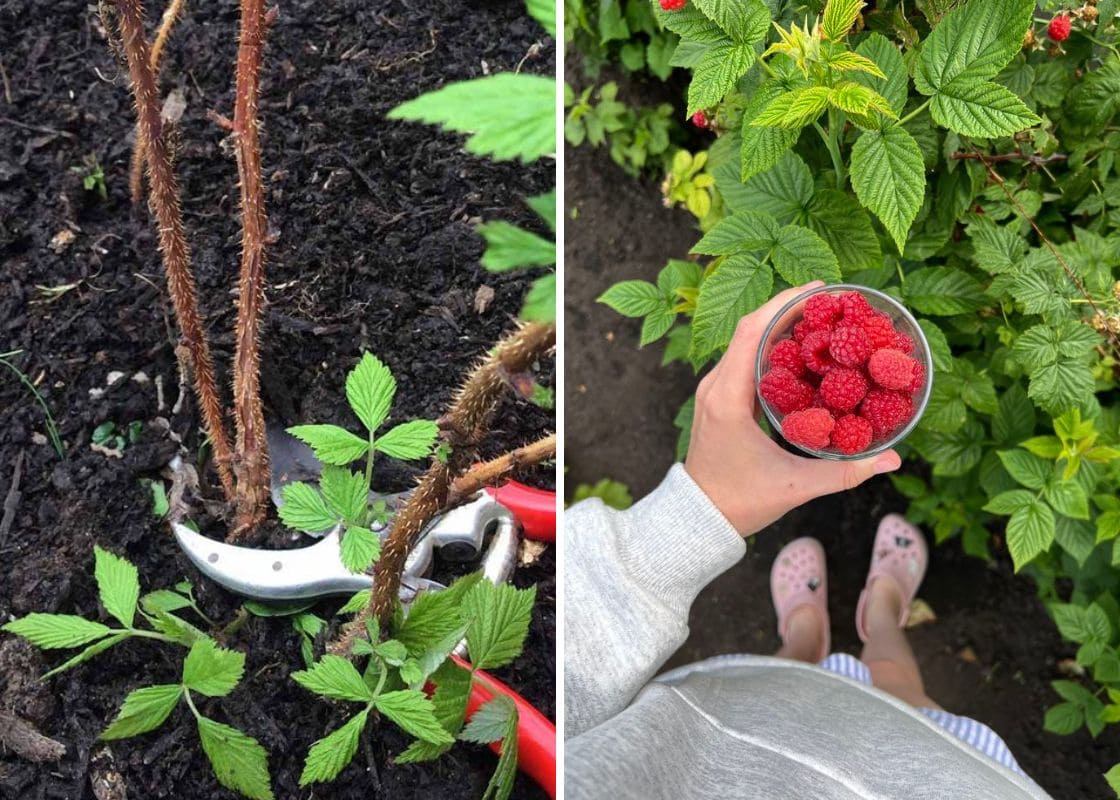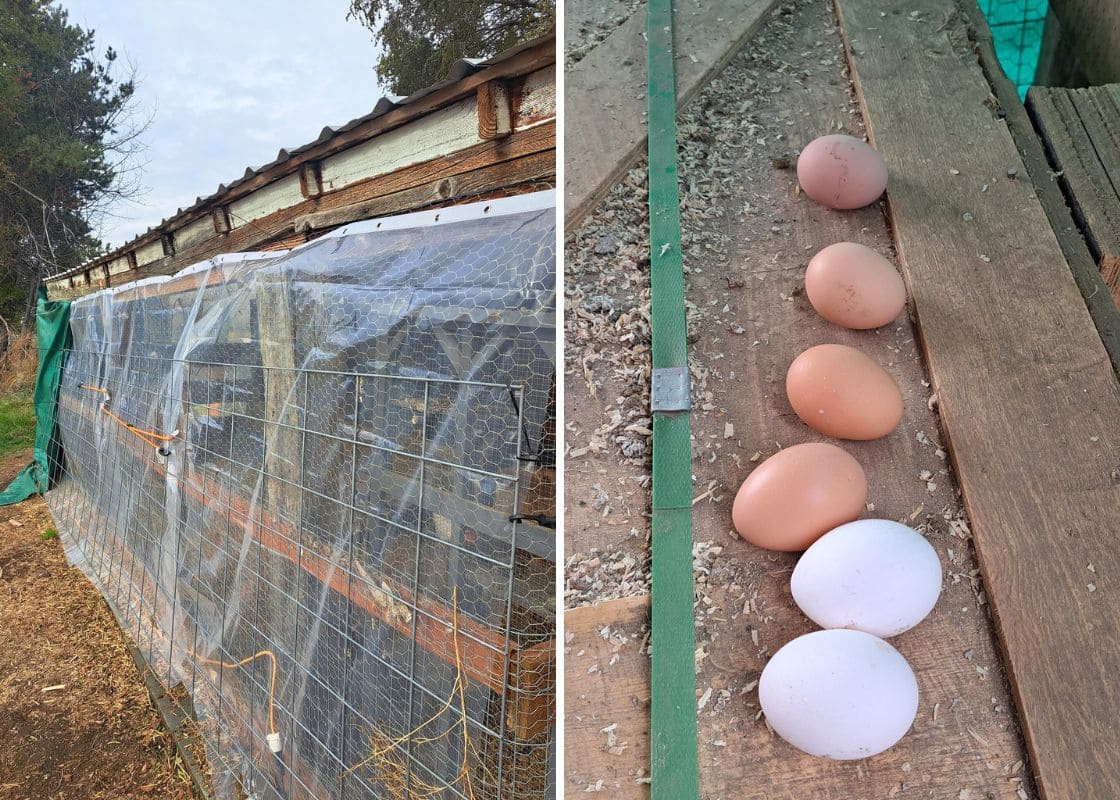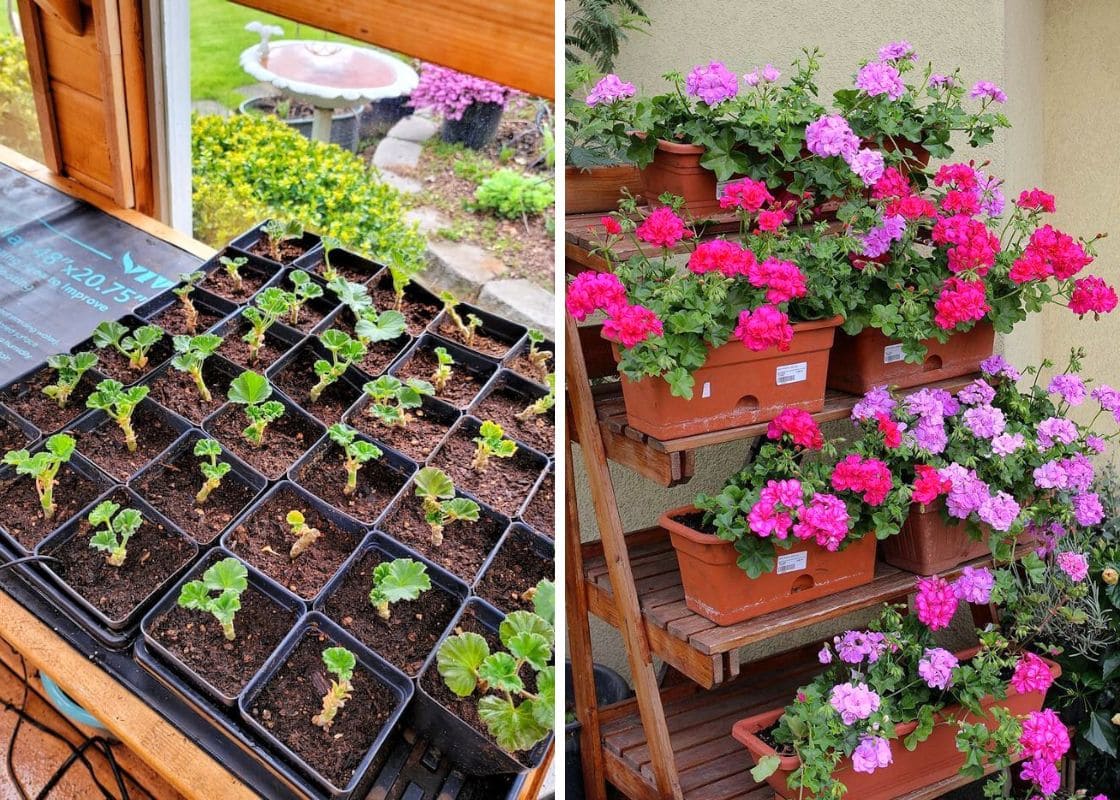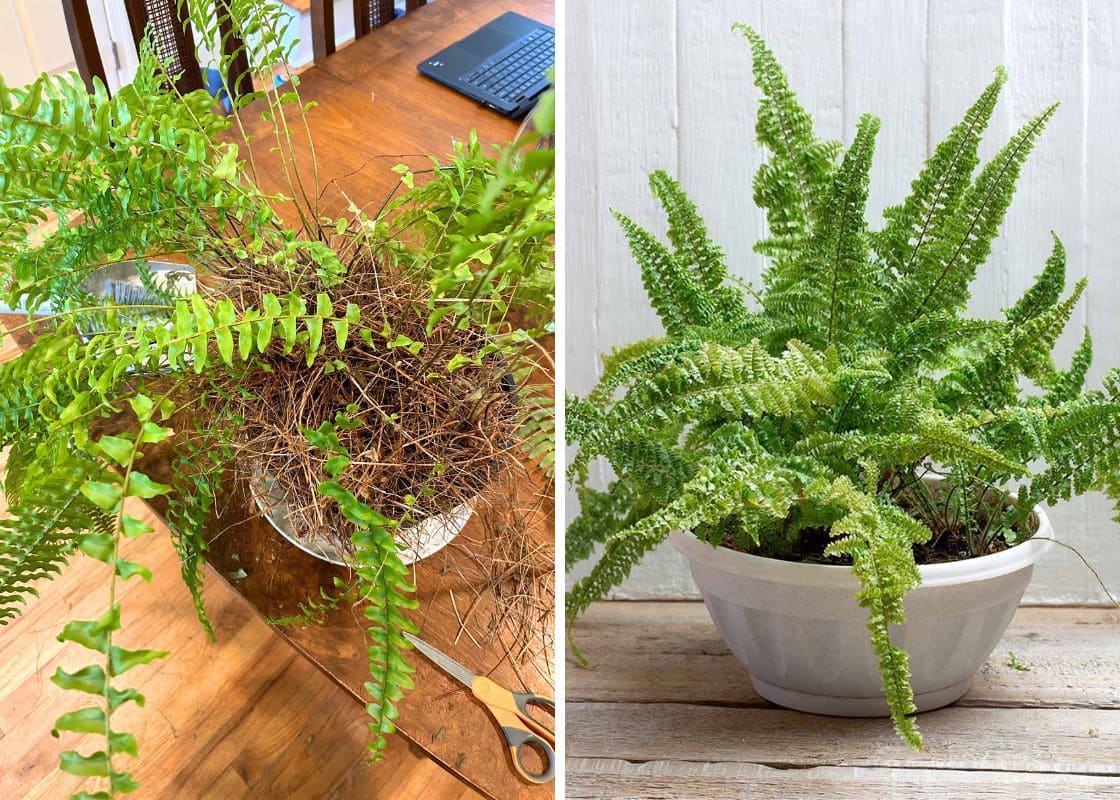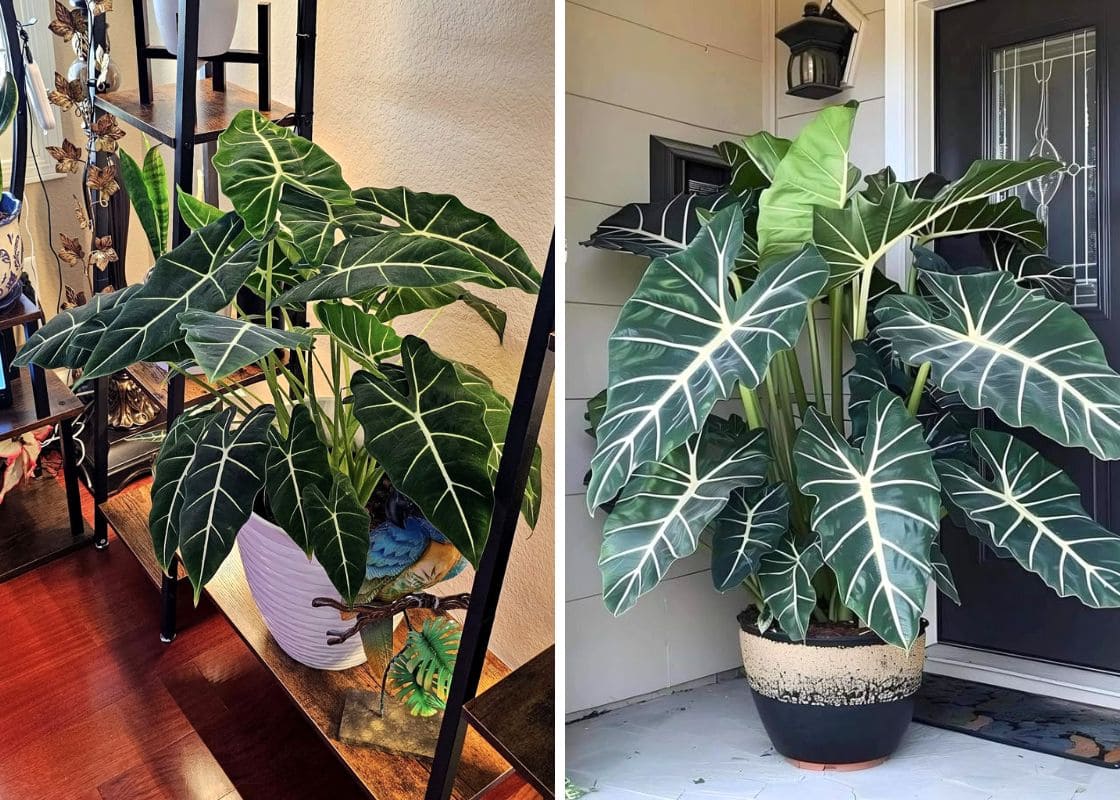Christmas Cactus is loved for its colorful holiday blooms, but sometimes the leaves tell a different story.
If yours are looking shriveled, limp, or wrinkled, it’s a sign something isn’t quite right.
The good news is that most of the time, it’s a care issue that can be corrected.
Let’s walk through the most common reasons leaves shrivel and what you can do to help your plant bounce back.
Underwatering
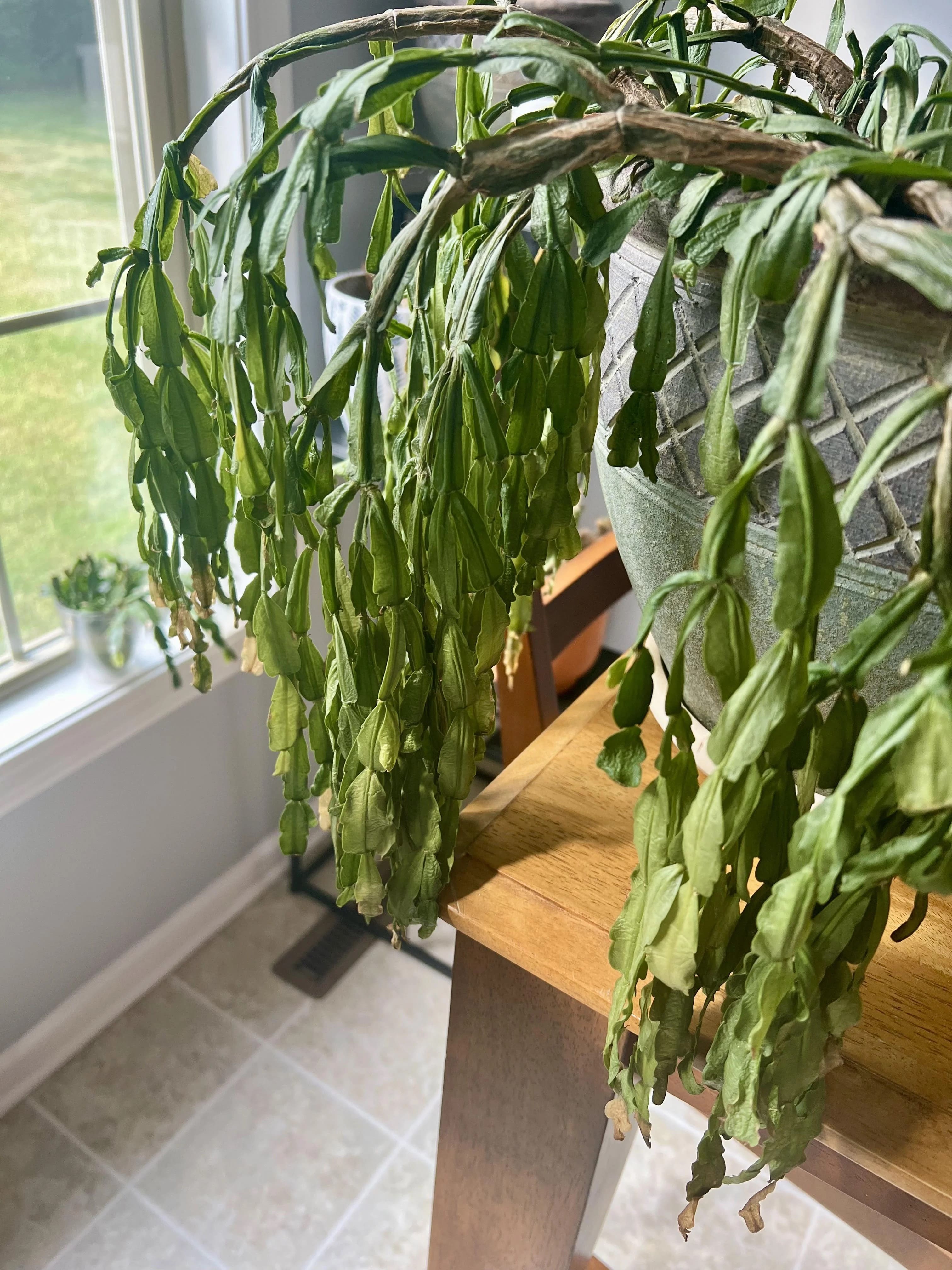
When the soil stays dry too long, the cactus uses up the water stored in its segments. This leaves the foliage looking thin, shriveled, and tired.
A good soak usually perks it back up, water thoroughly until it drains out, then let the top inch of soil dry before watering again.
Regular, moderate watering keeps the leaves plump and the plant happy.
Overwatering and Root Trouble
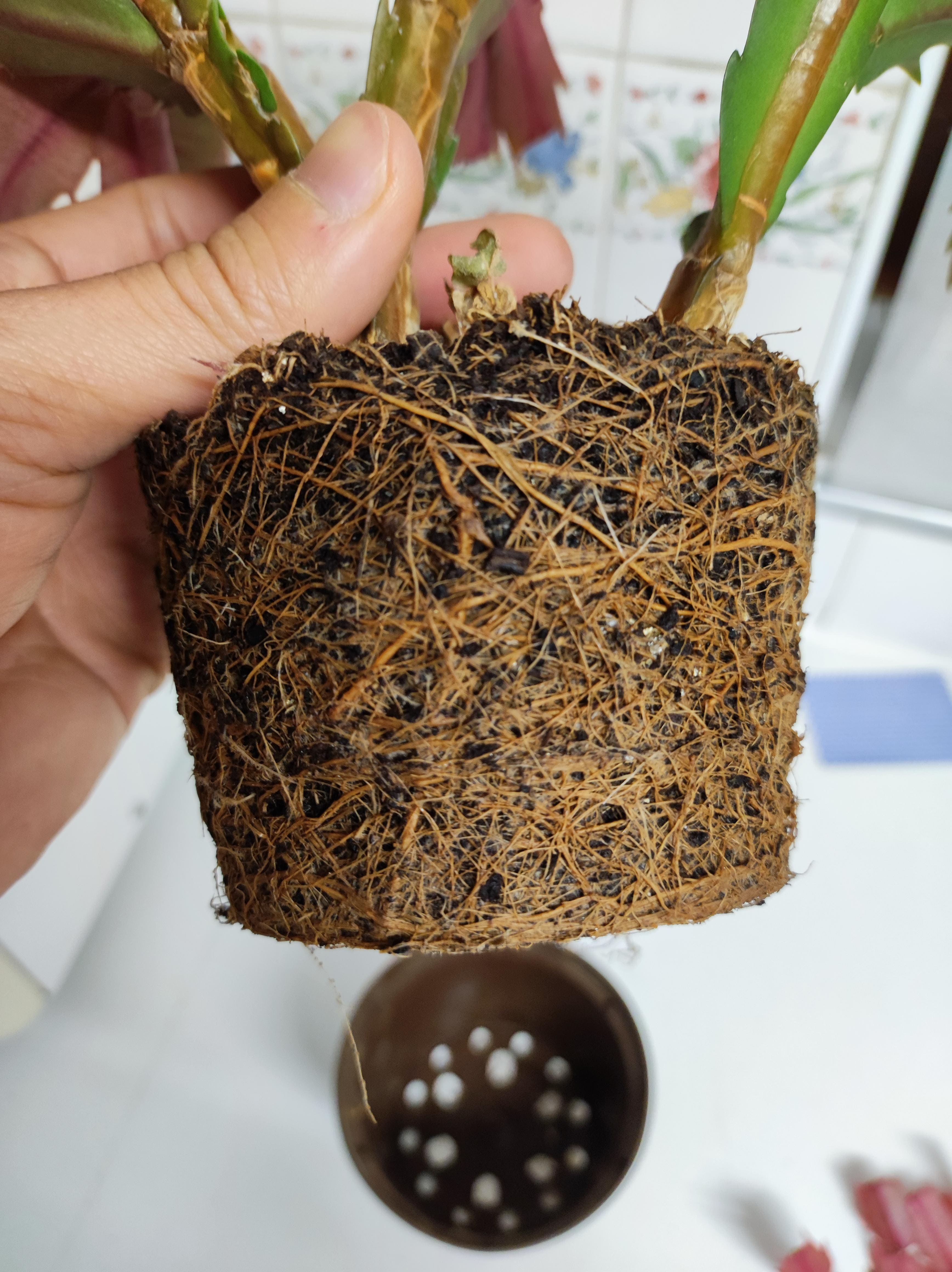
It might sound contradictory, but shriveling can also happen when the roots are drowning.
If the soil stays soggy, roots begin to rot and can’t deliver water to the leaves. That stress shows up as limp, wrinkled growth.
Repotting into a fresh, airy cactus mix and trimming away damaged roots gives the plant a new start.
Going forward, water less frequently and make sure the pot drains well.
Too Much Direct Sun
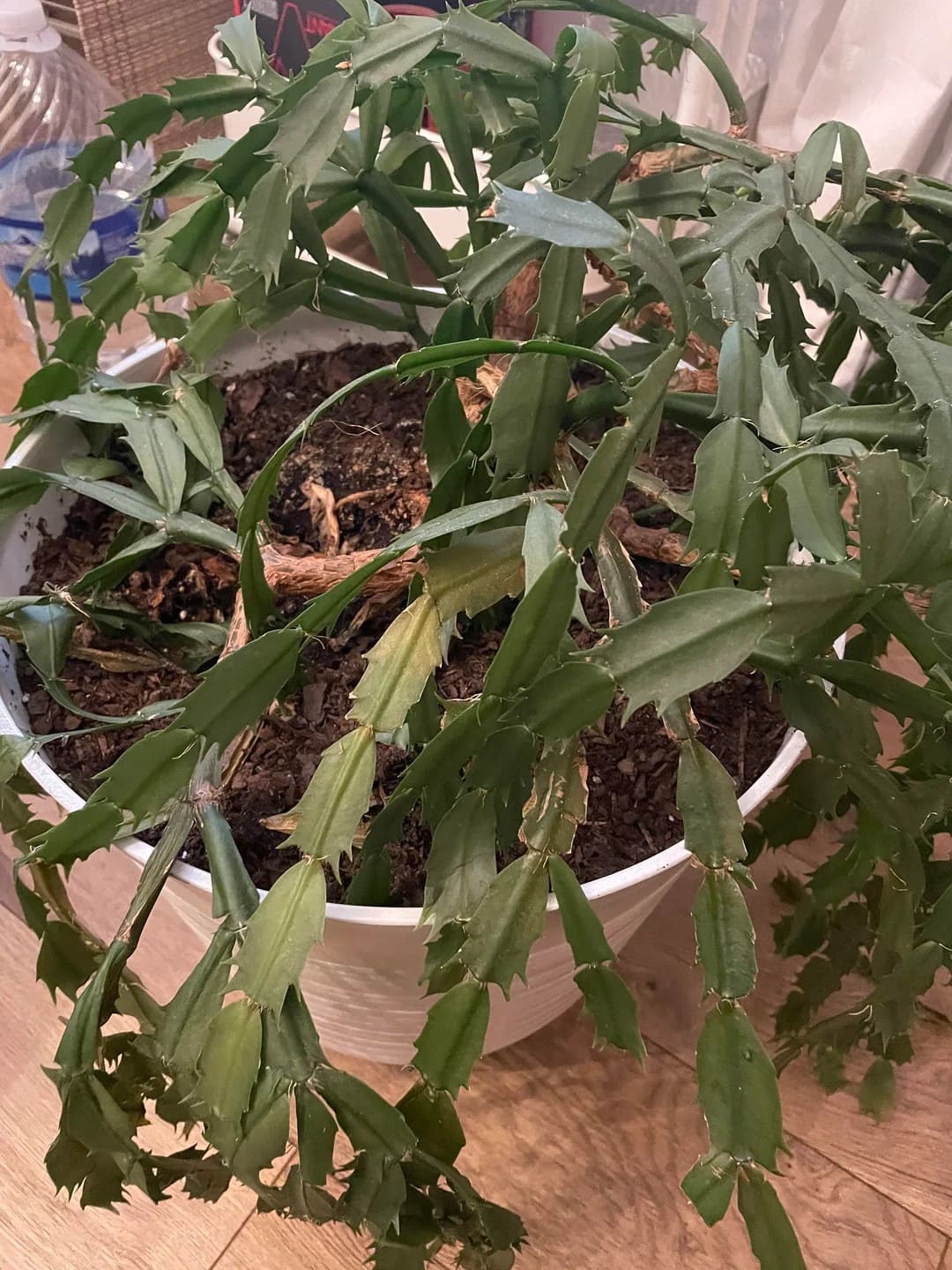
Christmas cactus comes from shaded forest canopies, not open deserts.
Too much direct sun, especially behind glass can scorch the leaves, leaving them shriveled and discolored.
Moving it to a spot with bright, indirect light (an east-facing window is perfect) usually helps.
If you only have a sunnier exposure, filter the light with a sheer curtain to soften it.
Soil That Holds Too Much Water
Heavy, compact soil suffocates the roots and leaves the plant under stress. That stress quickly shows up in the foliage.
Repotting into a lighter mix, something with potting soil, perlite, and orchid bark lets water drain away while keeping just enough moisture for the roots.
Always use a pot with drainage holes to avoid soggy conditions at the bottom.
Environmental Stress
Christmas cactus prefers stability.
Drafts from doors, blasts from heating vents, or sudden temperature swings can shock the plant, causing its leaves to shrivel.
Keeping it in a stable environment between 60-70°F helps it thrive.
If you’ve just moved it, a little patience often works wonders while it adjusts to its new home.
Lack of Nutrients
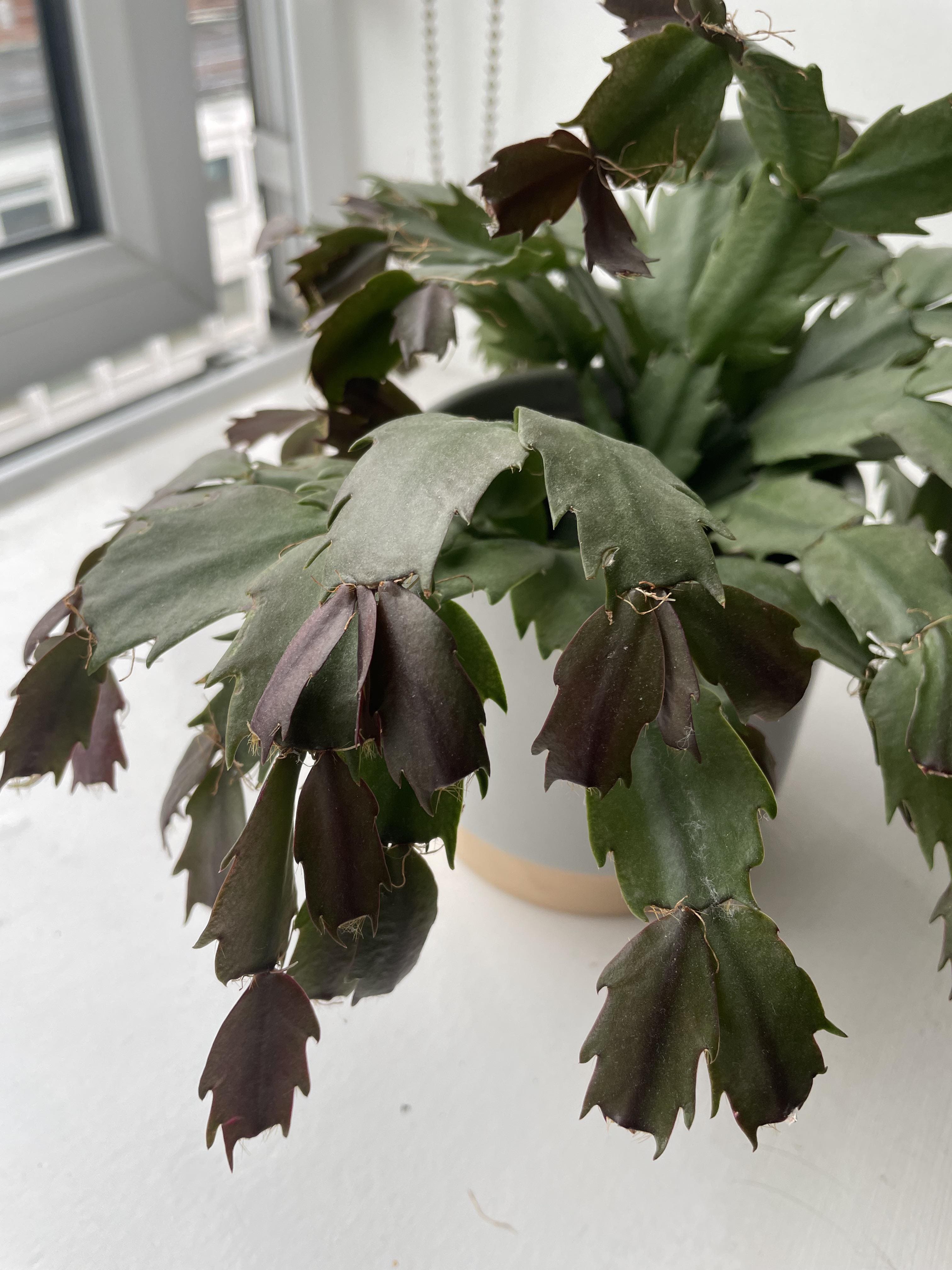
If the soil is old and depleted, the plant may not be getting enough to sustain healthy leaves.
Over time, this can lead to shriveling or pale, weak segments.
Feeding monthly in spring and summer with a balanced fertilizer makes a difference.
A small dose of magnesium (like diluted Epsom salts) now and then also supports stronger foliage. Just be sure to stop feeding in fall and winter when the plant is resting.
Prevention Tips
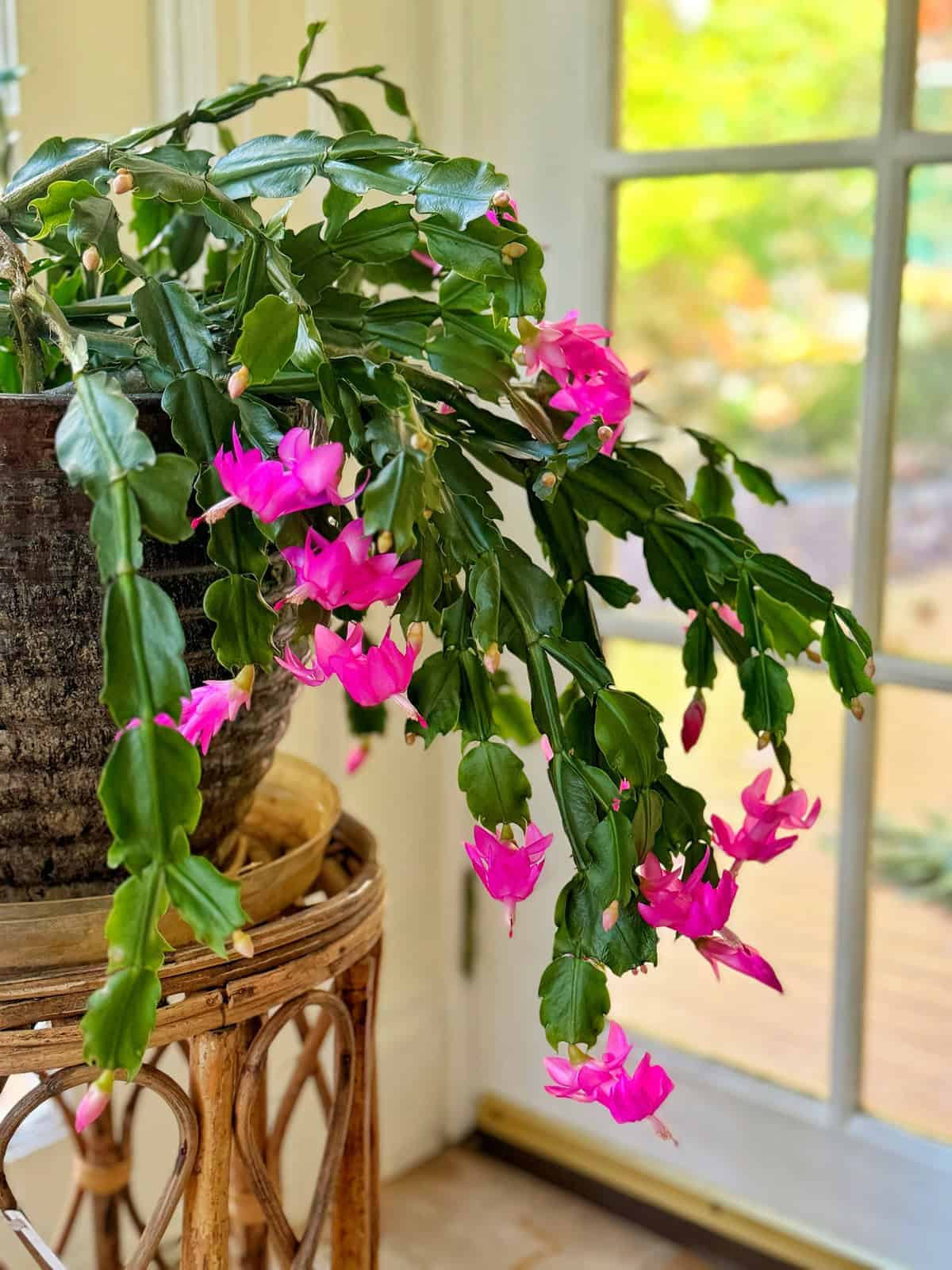
Water on a schedule that suits the season, more in spring and summer, less in winter, but never let the soil stay bone dry for long stretches.
Also, you can repot every 2-3 years into fresh, well-draining soil to avoid compaction and nutrient depletion.
Next, place the plant in bright, indirect light to encourage healthy growth without scorching.
Maintain a stable environment away from heat vents, fireplaces, or cold drafts.
Finally, feed lightly during the growing season to keep leaves strong and ready for holiday blooming.
Final Thoughts
Shriveled leaves on a Christmas Cactus are a cry for help, but they’re rarely the end of the story.
By checking how you water, adjusting light, refreshing soil, and giving the plant a steady environment, you can bring it back to health.
With the right care, those leaves will plump up again and when the holiday season comes around, your Christmas cactus will thank you.
Read more: 3 Christmas Cactus Types and Their Exotic Colors to Transform Your Home
